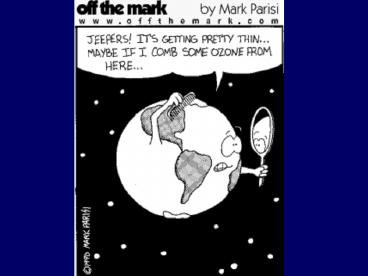School of Environmental Science and Management - PowerPoint PPT Presentation
1 / 20
Title:
School of Environmental Science and Management
Description:
Time lag before new technologies are embodied in CC regulations. 6 ... Factory B. 100 tons reduced. 200 tons reduced. Before 600 tons. Before 400 tons. After 500 tons ... – PowerPoint PPT presentation
Number of Views:50
Avg rating:3.0/5.0
Title: School of Environmental Science and Management
1
(No Transcript)
2
Voluntary and regulatory tools to mitigate
Climate Change
PP290 Leaders in Sustainability
- Magali Delmas
3
Different types of environmental
regulation/policies
- Command and control
- Permit system
- Market based instruments
- Taxes
- Tradable permits
- Information based regulations/Programs
- TRI
- Eco-labeling programs
- Negotiated agreements
4
Command and control/Direct regulation
- Laws prescribing objectives, standards and
technologies polluters must comply with - Examples
- Emission or discharge standard
- Process standard
5
Strengths and weaknesses of CC
- Advantages of command and control
- No search and information cost about the
technology to use - Easy monitoring
- Disadvantages of command and control
- Static and lacks incentives
- Time lag before new technologies are embodied in
CC regulations
6
Market mechanisms taxes and charges
- Payment for each unit of pollutant discharged
into the environment or for each unit of
environmental damage - Example
- power plant charged 100 per ton of BOD
discharged into a river
7
Strengths and weaknesses of taxes
- Strength
- Minimize total abatement costs
- Permanent incentive to reduce pollution
- Provide a source of revenue for governments
- Weaknesses
- Search and information costs
8
Tradable permits
- Governments distribute or sell pollution
permits corresponding to the total amount of
tolerable or allowable pollution. - Permits can be sold and purchased on the market
- Example RECLAIM SAQMD
9
Traditional Approach 30 mandatory reduction
Cap and Trade Approach
Before 600 tons
Before 400 tons
Before 600 tons
Before 400 tons
After 420 tons
After 280 tons
After 500 tons
After 200 tons
Factory A Reduction 50 per ton
Factory B Reduction 25 per ton
Factory A
Factory B
180 tons reduced
120 tons reduced
100 tons reduced
200 tons reduced
Total Emissions Reduced 300 tons Cost to Reduce
9,000
Total Emissions Reduced 300 tons Cost to Reduce
12,000
10
Survey of RECLAIM companies
- Information
- Survey mailed to 308 Firms in 2000
- Questions regarding pollution control
investments, company profile, - 129 responses return rate 46.4
- Trading activity (publicly available info)
- Results
- Firms that purchase credits are also likely to
invest in pollution prevention technologies. - Firms that meet more frequently with the AQMD are
more likely to invest in pollution prevention. - Strategic Reaction to RECLAIM wait and see
11
Strengths and weaknesses of tradable permits
- Strengths
- Total Q of pollution is fixed ex if new plant
comes, price of credit increases - Possibility to make profit
- Difficulties
- Initial allocation of permitsGrandfathering
- Distributive implications of permits
- Transaction costs
- Search and information costs about which
technology to use and whether to invest or buy
credits
12
Information based instruments
- Provide people with information they need to
understand and evaluate risks and to take
appropriate action to avoid those risks - Examples
- TRI
- Eco-labeling programs
13
Strengths and weaknesses of information
instruments
- Strengths
- Consumers can make buying decisions based on
information provided by govt. - Leaders can influence the standard
- Weaknesses
- Requires simple and accessible information
14
Negotiated Agreements
- Deals between government and industry whereas a
firm agrees to go beyond compliance in exchange
for flexibility in existing regulations - Example Project XL
15
U.S. EPA Project XL 1995
- Facilities are allowed to develop pollution
control strategies that replace or modify
specific regulatory requirements on the
conditions that these strategies improve their
environmental performance. - Firms negotiate a package of performance-based
permits. - Enable the firm to react to changes in production
processes without the need to coordinate with
regulators (i.e. obtain a new permit).
16
XL transaction costs
- Number of firms that have successfully negotiated
an XL agreement ? 53 - High transaction costs
- average 320,000
- High negotiation time
- average 26 months
17
Climate Challenge Program
- US DOE and Electric Utilities
- 1995-2000
- Tom Kuhn, the president of the Edison Electric
Institute 1996 - Our industry has demonstrated that a vigorous,
voluntary approach toward curbing greenhouse gas
emissions is the way to go. We will continue to
put these programs in place while opposing
government and international mandates that would
cost the U.S. economy thousands of jobs.
Utilities have met the challenge and are
continuing their leadership role in working with
the government to find creative and effective
ways to improve the environment."
18
Potential private benefits of VP
- Flexibility in the implementation of existing
regulations - Increased participation in the regulatory process
- Increased market share through enhanced
reputation - Knowledge acquisition, innovative solutions
19
(No Transcript)
20
Next week
- Environmental Performance in the chemical
industry - Toxic Release Inventory
- Echo
- Each group ranks the 14 companies and send a
table with findings. - I group presents its results































